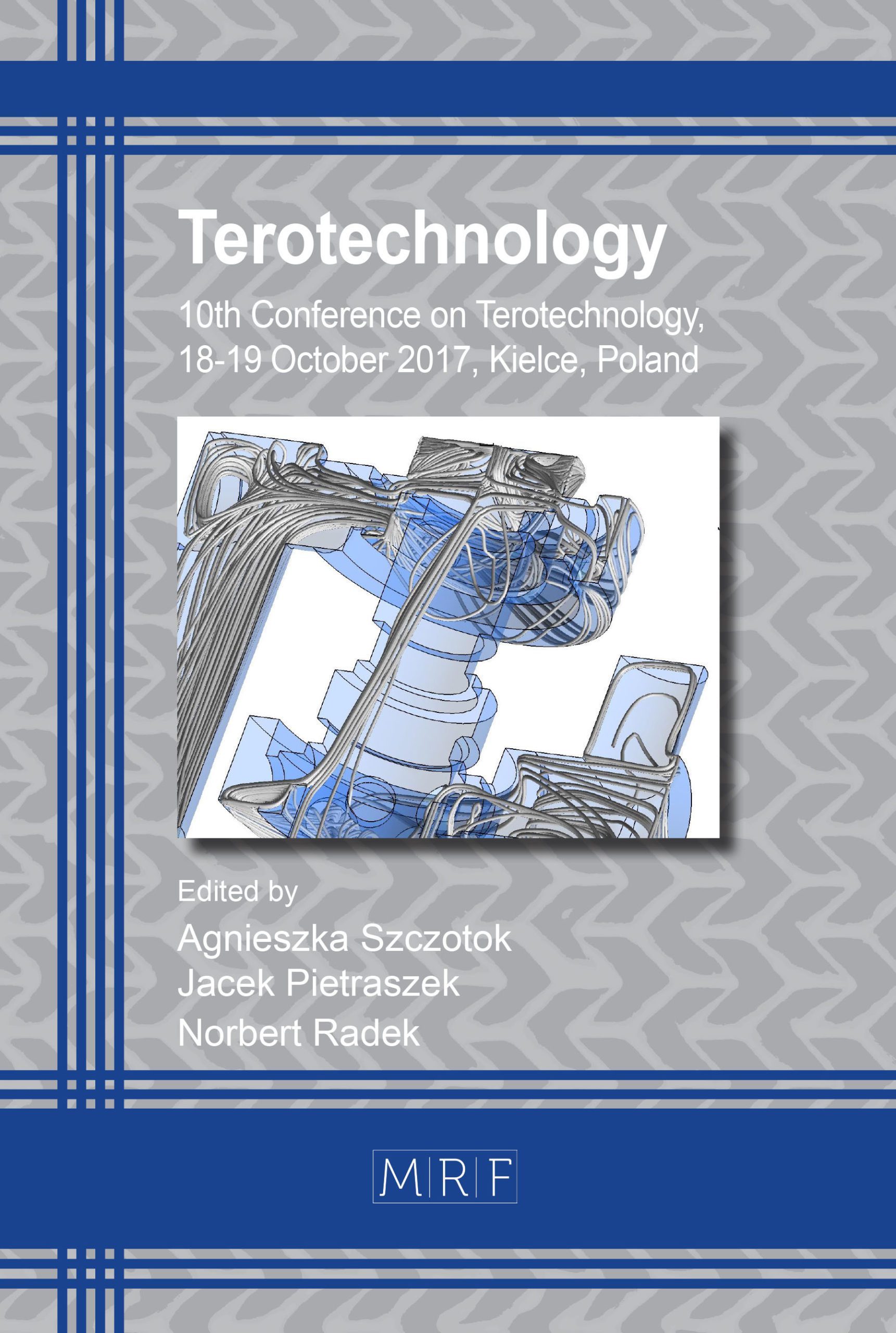Powder Surface Modification as a Method of Corrosion Rate Limitation of the Magnetic RE-M-B Composite in an Acid Medium with Different pH
KLIMECKA-TATAR Dorota
download PDFAbstract. This paper presents the results of research on the effects of chemical treatment of the magnetic powder particles surface on the corrosion resistance of composites based on Nd12Fe77Co5B6 powder bonded with an epoxy resin. In the studies, a magnetic material formed of a commercial MQP-B powder has been used and subjected to chemical modification in such aqueous solutions as acetic acid, EDTA, citric acid and oxalic acid. Chemical treatment of the powder particles surface was applied for etching the oxide paramagnetic phases formed on the surface as an effect of spontaneous oxidation of the alloy elements (Nd and Fe) in the presence of oxygen and moisture. On the basis of changes in the polarization resistance value, which were recorded for a series of samples in 0.5M acidic sulphate solutions (pH = 2, 3 and 4), it has been found that the proposed pre-treatment has beneficial effect on the stability of the material in acid environments.
Keywords
Bonded Magnets, Nd-Fe-B Alloys, Polarization Resistance
Published online 7/16/2018, 6 pages
Copyright © 2018 by the author(s)
Published under license by Materials Research Forum LLC., Millersville PA, USA
Citation: KLIMECKA-TATAR Dorota, ‘Powder Surface Modification as a Method of Corrosion Rate Limitation of the Magnetic RE-M-B Composite in an Acid Medium with Different pH’, Materials Research Proceedings, Vol. 5, pp 231-236, 2018
DOI: http://dx.doi.org/10.21741/9781945291814-41
The article was published as article 41 of the book Terotechnology
![]() Content from this work may be used under the terms of the Creative Commons Attribution 3.0 licence. Any further distribution of this work must maintain attribution to the author(s) and the title of the work, journal citation and DOI.
Content from this work may be used under the terms of the Creative Commons Attribution 3.0 licence. Any further distribution of this work must maintain attribution to the author(s) and the title of the work, journal citation and DOI.
References
[1] R. Ulewicz, E. Wysłocka, Magnets: History, the current state and the future, METAL 2015 – 24th International Conference on Metallurgy and Materials, Conference Proceedings, 1680-16862, Brno, Czech Republic
[2] P. Ceruti, S. Ross Bryant, Lee Jun-Ho, M.I. MacEntee, Magnet-Retained Implant-Supported Overdentures: Review and 1-Year Clinical Report, J Can Dent Assoc. 76 (2010) 52
[3] John J. Croat, Rapidly Solidified Neodymium-Iron-Boron Permanent Magnets, Elsevier Science, Woodhead Publishing Series in Electronic and Optical Materials, 2017
[4] K. Loewe, D. Benke, C. Kübel, T. Lienig, K.P. Skokov, O. Gutfleisch, Grain boundary diffusion of different rare earth elements in Nd-Fe-B sintered magnets by experiment and FEM simulation, Acta Materialia, 124 (2017) 421–429. https://doi.org/10.1016/j.actamat.2016.11.034
[5] T. T. Sasaki, T. Ohkubo, K. Hono, Structure and chemical compositions of the grain boundary phase in Nd-Fe-B sintered magnets, Acta Materialia, 115 (2016) 269–277. https://doi.org/10.1016/j.actamat.2016.05.035
[6] D. Klimecka-Tatar, H. Bala, B. Ślusarek, K.Jagielska-Wiaderek, The effect of consolidation method on electrochemical corrosion of polymer bonded Nd-Fe-B type magnetic material, Arch Metall Mater, 54/1 (2009)247-256
[7] G.A.Zickler, P. Toson, A. Asali, J. Fidler, Nanoanalytical TEM Studies and Micromagnetic Modelling of Nd-Fe-B Magnets, Physics Procedia, 75 (2015) 1442–1449. https://doi.org/10.1016/j.phpro.2015.12.164
[8] L. Z. Zhao, Q. Zhou, J. S. Zhang, D. L. Jiao, Z. W. Liu, J. M. Greneche, A nanocomposite structure in directly cast NdFeB based alloy with low Nd content for potential anisotropic permanent magnets, Materials & Design, 117 (2017) 326–331. https://doi.org/10.1016/j.matdes.2017.01.008
[9] K. Radomska, G. Pawłowska, D. Klimecka-Tatar, Profilometry surface analysis of bonded magnets based on biencapsulated Nd-(Fe,Co)-B powder, Ochrona przed Korozją 4 (2014) 142-146
[10] D. Klimecka-Tatar, G. Pawłowska, M. Sozańska, The Effect of Powder Particle Biencapsulation with Ni-P Layer on Local Corrosion of Bonded Nd-(Fe,Co)-B Magnetic Material, Archives of Metallurgy and Materials, 60/1 (2015) 153-157. https://doi.org/10.1515/amm-2015-0024
[11] A. A. El-Moneima, O. Gutfleish, A. Plotnikov, A. Gebert, The Influence of Co and Ga on the Corrosion Behavior of Nanocrystalline NdFeB-Based, Magnets J. Magn. Magn. Mater. 248 (2002) 121-133. https://doi.org/10.1016/S0304-8853(02)00286-X
[12] K. Kapustka, G. Ziegmann, D. Klimecka-Tatar, Technological and ecological safety in aspect of chemical properties of recycled neodymium magnets – electric motors and hard disk, Production Engineering Archives, 17/ 4 (2017) 36-39. https://doi.org/10.30657/pea.2017.17.08
[13] K. Kapustka, G. Ziegmann, S. Sdrenka, T. Elwert, D. Klimecka-Tatar, Microscopic characteristic of Nd-Fe-B magnets structure – magnets recovered from electric motors, Archiwum Wiedzy Inżynierskiej, 2/1 (2017) 39-41































